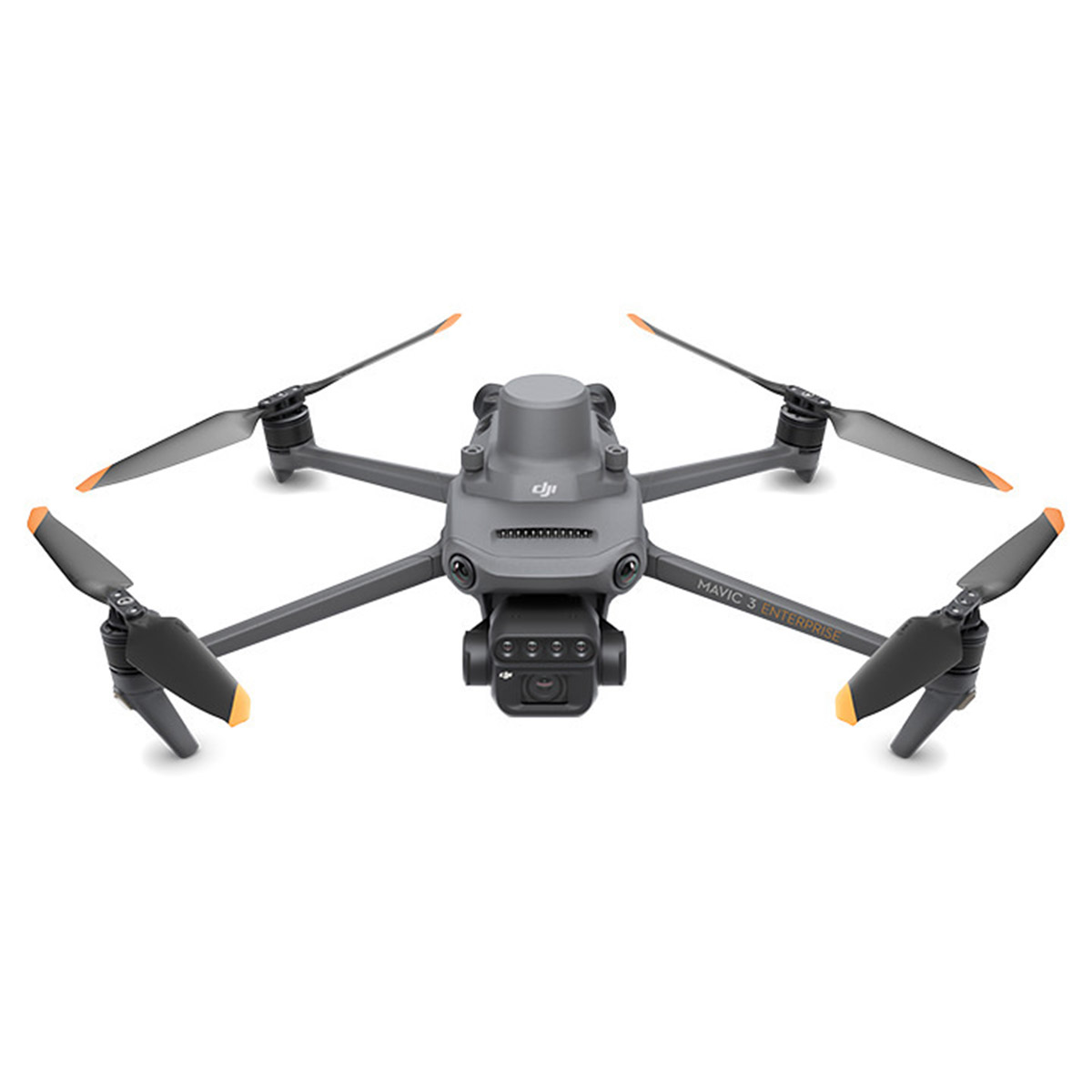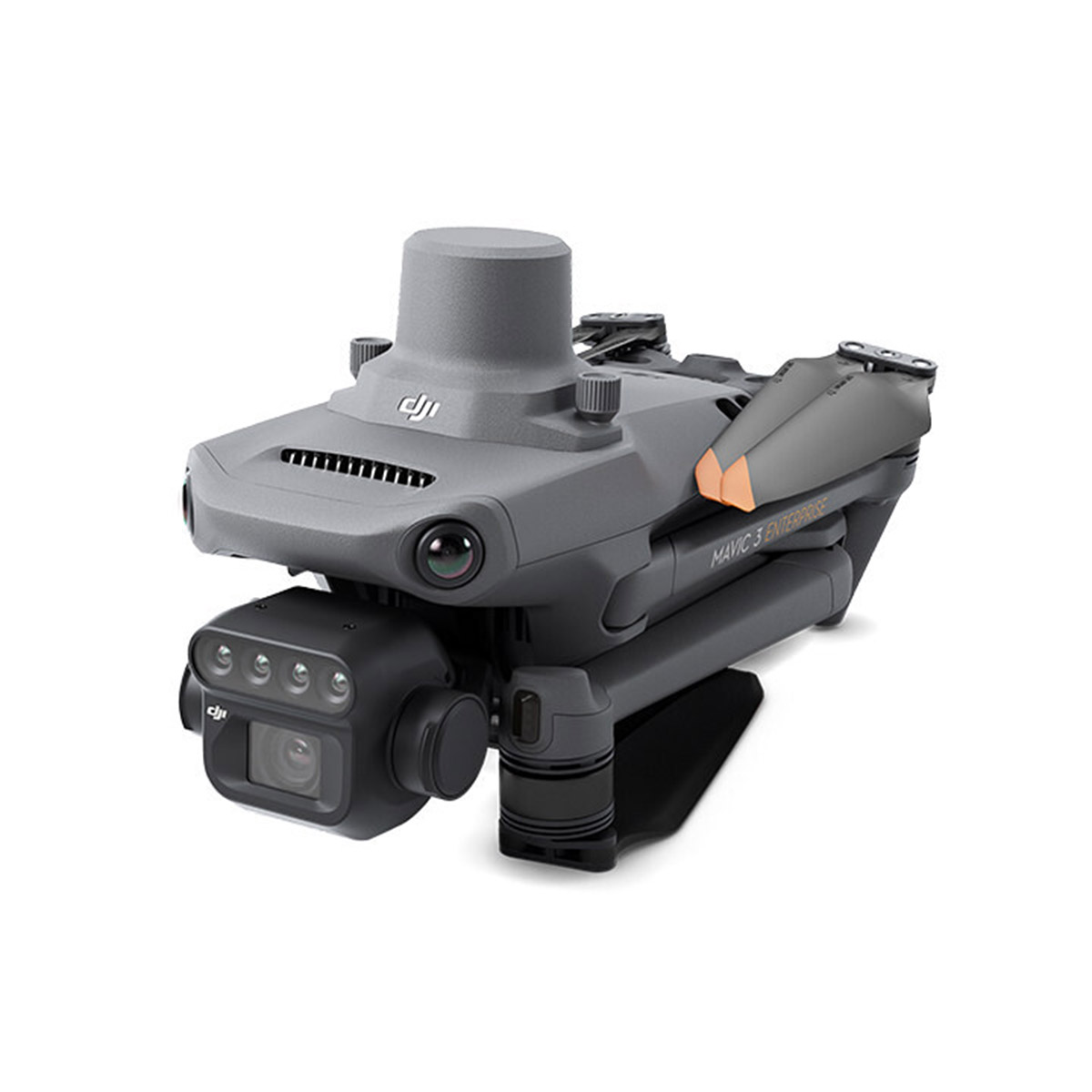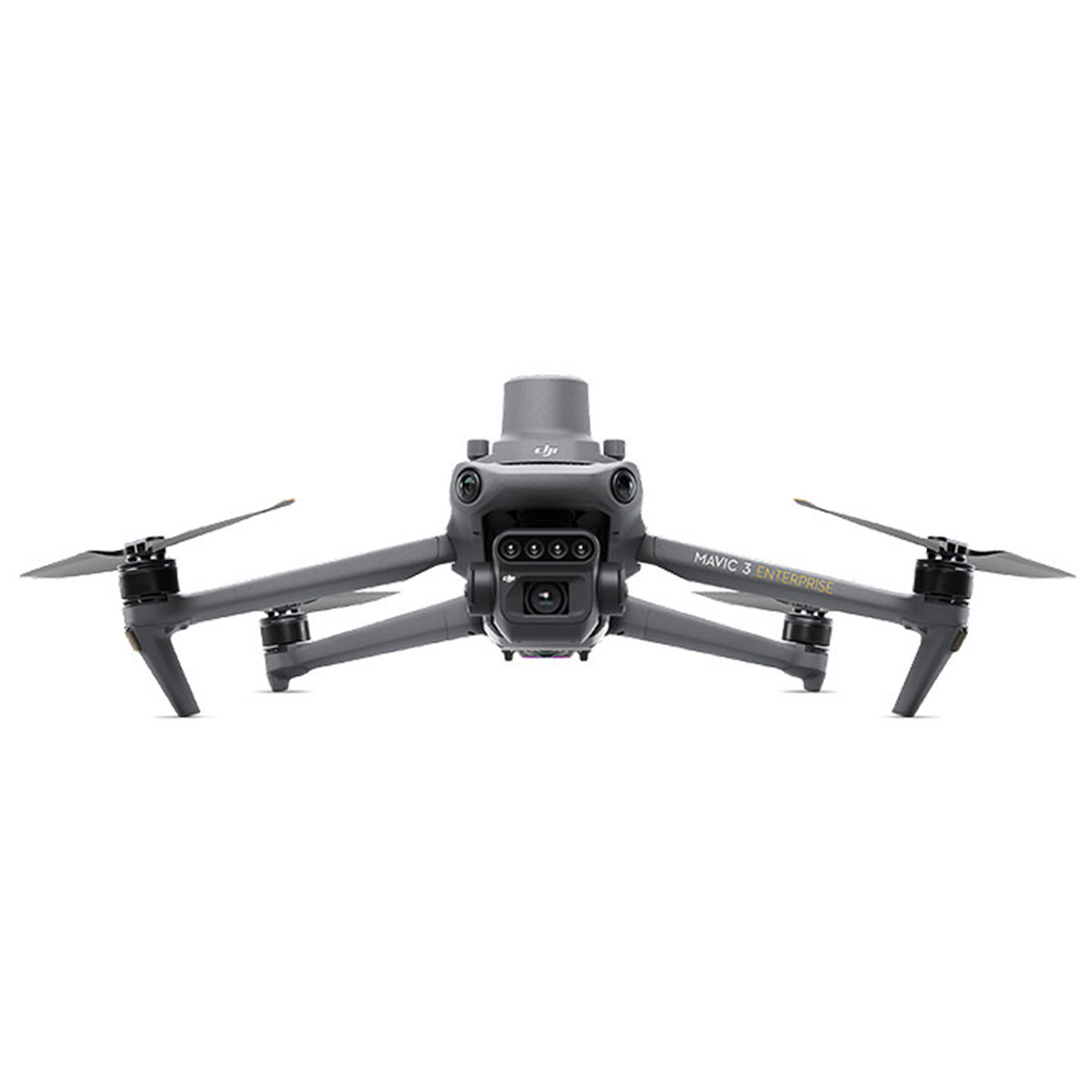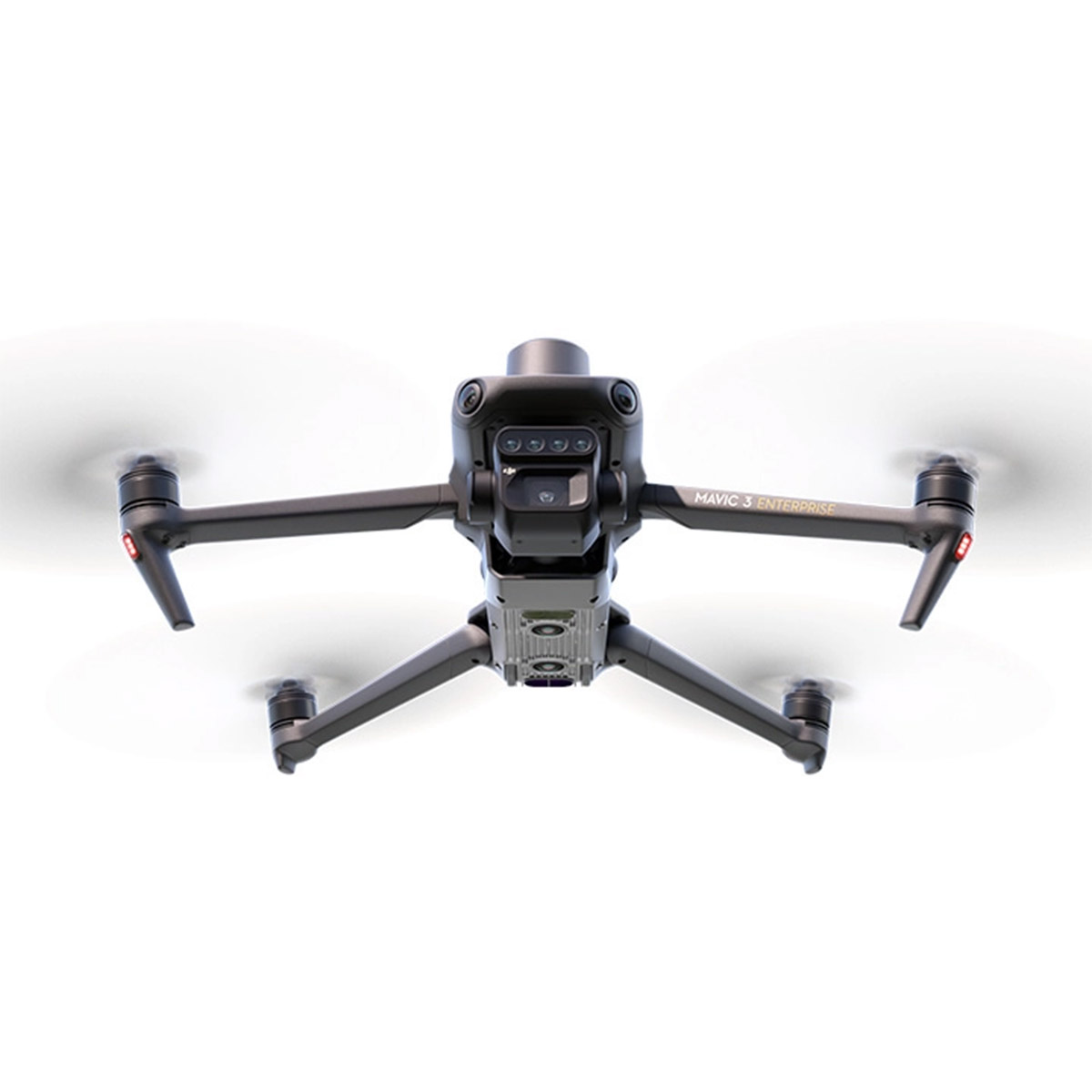Mavic 3 Multispectral
Effective aerial surveying needs to see the invisible. That's why Mavic 3 Multispectral has two forms of sight. It combines an RGB camera with a multispectral camera to scan and analyze crop growth with total clarity. Agricultural production management requires precision and data, and Mavic 3M delivers both.
Efficient and reliable battery life
Ultra-long battery life, fast bursts
43 minutes [4]
Cruise time
200 hectare [3]
A single flight can complete mapping operations over an area of 200 hectares.

Fast charging
100W Battery Charging Hub
High-efficiency fast charging
88W fast charging
Aircraft
RTK module
Accurate images that capture every pixel
The Mavic 3M comes with the RTK module for centimeter-level positioning. Flight control, the camera, and the RTK module sync in microseconds to accurately capture the location of each camera’s imaging center. This enables Mavic 3M to do high-precision aerial surveying without using ground control points.
Stable signal, smooth image transmission
The O3 transmission integrates two transmitting signals and four receiving signals to support 15km ultra-long transmission distances.
Omnidirectional obstacle sensing [1], terrain-follow aerial surveying
The aircraft features multiple wide-FOV vision sensors that accurately detect obstacles in all directions for omnidirectional obstacle avoidance. The terrain-follow aerial surveying can be easily performed in steep-slope landscapes
Applications
Orchard mapping
Mavic 3M aerial surveying
DJI Terra / DJI SmartFarm Platform [6] Mapping
Generate 3D Routes
Agricultural Drone Operation
Guide variable rate applications
For rice fertilization, cotton growth regulation, and potato foliar fertilizer spraying, the Mavic 3M is used to obtain multi-spectral images of crops. DJI Terra or the DJI SmartFarm Platform [6] can then generate NDVI and other vegetation indices maps, capturing differences in crop potential and generating prescription maps that allow agricultural drones to execute variable-rate application. This ultimately allows users to reduce costs, increase yield, and protect the environment.
Mavic 3M aerial surveying
DJI SmartFarm Platform
Generates prescription maps for cropland
Agricultural Drone
Intelligent field scouting
The Mavic 3M can carry out automatic field scouting. The field scout images can be uploaded to the DJI SmartFarm Platform [6] in real time through a 4G network. It can find abnormalities, such as emergence deficiencies, weed pressure, and crop lodging in a timely manner. It can also conduct intelligent analyses, such as cotton seedling identification and rice production testing, using AI identification for real-time sharing of crop growth information, guidance of agronomic activities, and easy management of 70 hectares of farmland by one person.
Environmental Monitoring and Natural Resources Survey
The Mavic 3M can also be used in environment and natural resource surveys, such as water enrichment monitoring, forest distribution surveys, urban green area surveys, and more.
Open Ecosystem
Cloud API
The Mavic 3M can be directly connected to a third-party cloud platform via Pilot 2’s built-in DJI Cloud API based on the MQTT protocol. There is no need to develop an app separately to enable the transmission of UAV equipment information, live streaming, photo data, and other information.
MSDK
The Mavic 3M supports Mobile SDK 5 (MSDK5) with a fully open-source production code sample. The MSDK5 makes it possible to develop a proprietary control app for UAV field patrol, smart surveying, and other scenarios, making it more user-friendly.
1. DO NOT fly in severe weather conditions, such as in strong winds (wind speeds of 12 m/s or more), snow, rain, or lightning. DO NOT fly in areas that are 6,000 meters or higher above sea level. DO NOT fly the aircraft in environments where the temperature is below -10° C (14° F) or above 40° C (104° F). DO NOT take off from moving objects, such as cars and ships. DO NOT fly close to reflective surfaces, such as water or snow. Otherwise, the vision positioning system may not work properly. When the GNSS signal is weak, fly the aircraft in environments with good lighting and visibility. The vision system may not work properly in poor light conditions. Be aware of flight safety when flying near sources of electromagnetic interference. Common sources of electromagnetic interference include high-voltage power lines, high-voltage transmission stations, radar stations, cell phone base stations, broadcast towers, Wi-Fi hotspots, routers, and Bluetooth devices.
2. The 15km transmission distance can only be achieved under the FCC standard when measured in an outdoor environment without interference. The SRRC standard is adopted in mainland China, and the furthest transmission distance is 8 km. The above data are the furthest communication distances for one-way, non-return flights under each standard. Please pay attention to return prompts in the DJI Pilot 2 app during flight.
3. Specific test conditions: In a sunny environment without wind, the orthographic flight aerial photography is obtained with a flight speed of 15 m/s, a flight altitude of 217 m, a ground sampling distance (GSD) of 5.73 cm for visible and 10 cm for multispectral, a fore-and-aft overlap rate of 70%, and a side overlap rate of 60%.
4. Data was measured using a DJI Mavic 3M flying at a constant speed of 36 kph at sea level in a windless environment until 0% power remained. It is for reference only. Please pay attention to Return to Home prompts on the DJI Pilot 2 app during flight.
5. Optional accessories. This service is not available in some countries. Please consult your local distributor for details. Do not install the DJI Cellular module when using a multispectral camera to capture data, in order to avoid blocking the intensity sensor.
6. The DJI Smart Agricultural Platform will be supported in Q2 of 2023. This service is not available in some countries. Please consult your local distributor for details.






